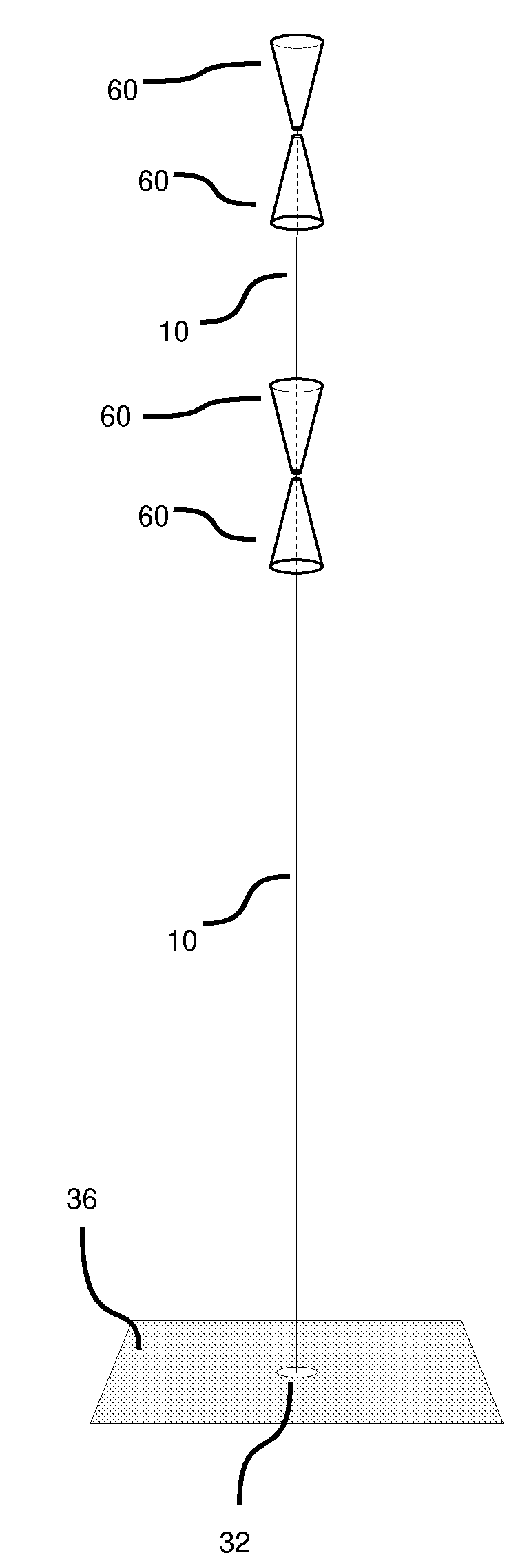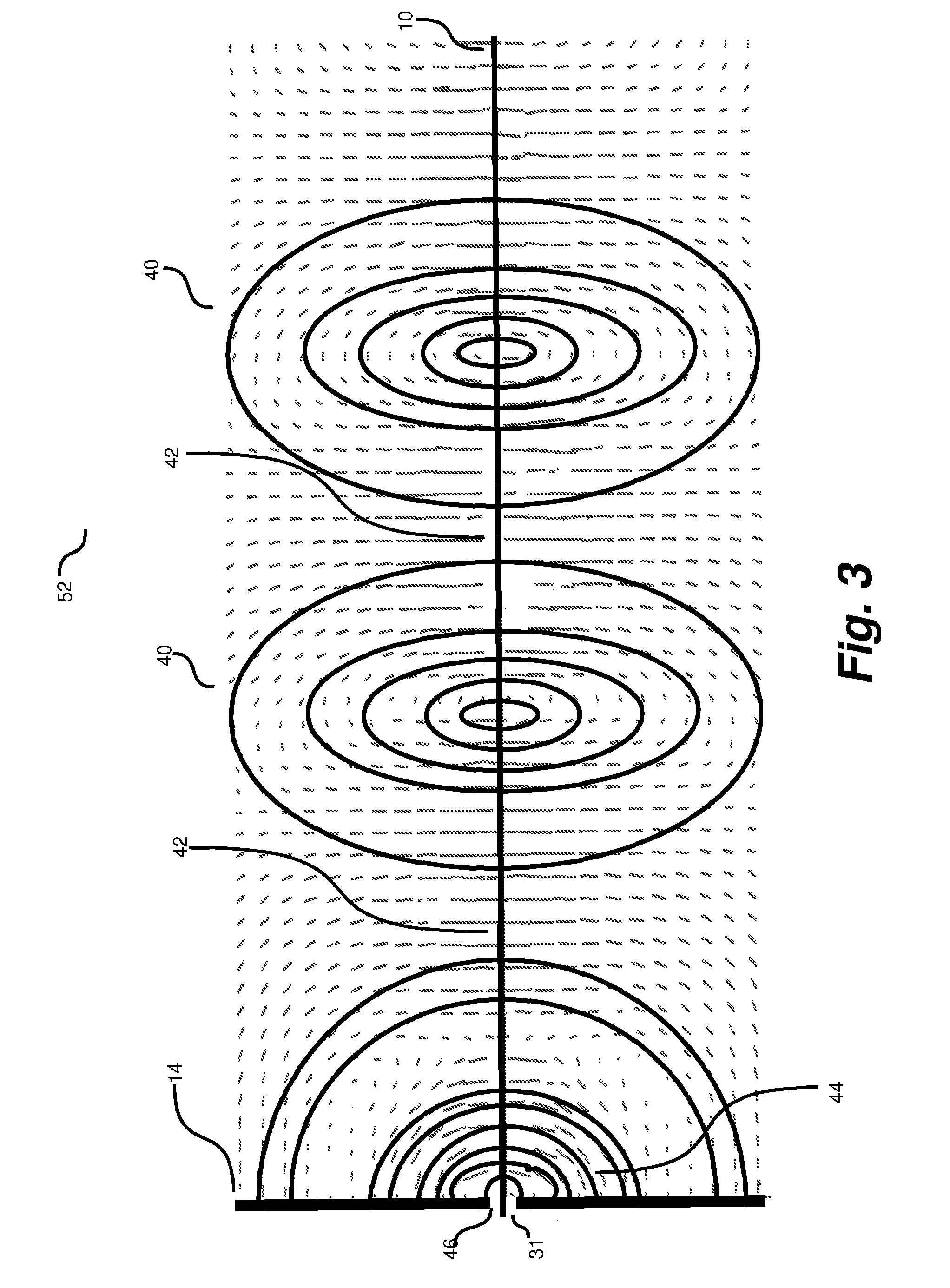System and apparatus for transmitting a surface wave over a single conductor
a transmission system and surface wave technology, applied in waveguides, antenna details, antennas, etc., can solve the problems of insufficient surface layer to shrink the radial extent, general restrictions on the use of insulation or special conditioning of the conductor, and no theoretical treatment showed how to reduce the theory to practice or how to actually launch a surface wave onto the conductor
- Summary
- Abstract
- Description
- Claims
- Application Information
AI Technical Summary
Benefits of technology
Problems solved by technology
Method used
Image
Examples
Embodiment Construction
[0054]Referring now to FIGS. 1-14B, wherein like reference numerals refer to like components in the various views, there is shown a novel SWTL system for launching surface waves on a single conductor. FIG. 1 is a schematic view showing an embodiment of the present invention, which is a SWTL system comprising a first launcher 11 comprising an adapter 12 and mode converter 14 located at one end of a SWTL central conductor 10 which has its second end connected to a second launcher 13 comprising a second mode converter 16 and second adapter 18. The first and second launchers may be either identical or different in design.
[0055]The incident wave 20 may reach the first launcher either by way of propagation through or along a conventional type of transmission line or by radiation through a free space or dielectric medium. The launcher may also provide impedance transformation between the impedance of the incident wave to the impedance of the SWTL as part of its function.
[0056]FIG. 3 is a s...
PUM
 Login to View More
Login to View More Abstract
Description
Claims
Application Information
 Login to View More
Login to View More - R&D
- Intellectual Property
- Life Sciences
- Materials
- Tech Scout
- Unparalleled Data Quality
- Higher Quality Content
- 60% Fewer Hallucinations
Browse by: Latest US Patents, China's latest patents, Technical Efficacy Thesaurus, Application Domain, Technology Topic, Popular Technical Reports.
© 2025 PatSnap. All rights reserved.Legal|Privacy policy|Modern Slavery Act Transparency Statement|Sitemap|About US| Contact US: help@patsnap.com



